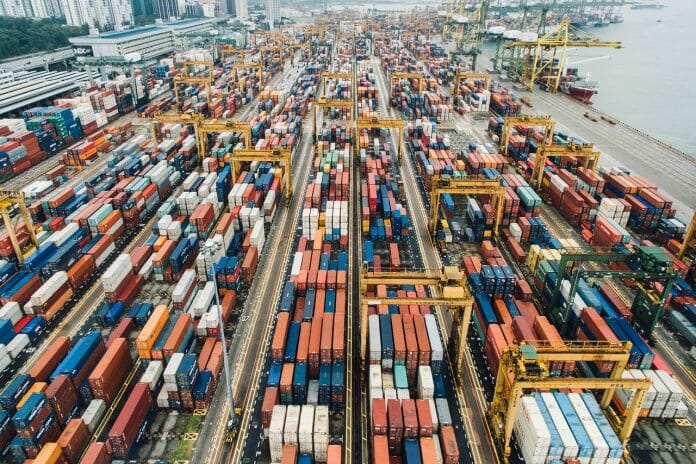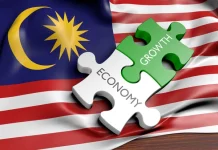By Evelyn S. Devadason
In response to Covid-19, countries have imposed temporary restrictions, such as outright export bans, export duties, export licensing, export permit requirements and export quota, on medical supplies and food. By the end of May 2020, 95 countries had imposed 124 export restrictions or bans according to the International Trade Centre (ITC). The increase in the incidence of non-tariff measures (NTMs) from the export side was also met with an increase in import related NTMs. Members of the World Trade Organisation (WTO) had submitted a total of 144 notifications related to Covid-19 as of end-May 2020, of which most them constituted sanitary and phytosanitary (SPS) measures and technical barriers to trade (TBTs). These policy measures, though temporary, disrupted supply chains, reduced global supply of critical products and cut off import dependent countries of essential supplies.
The flipside to the distortive trade measures was the temporary reduction of tariffs on medical supplies and the suspension or simplification of NTM procedures to facilitate cross-border movement of relief consignments. For example, in March 2020, Malaysia exempted import and excise duties to manufacturers of hand sanitisers that use raw materials (undenatured ethyl alcohol and denatured ethyl alcohol), and subsequently suspended standard requirements and provided special exemptions to clear non-essential goods at affected ports.
There are several lessons learned from the changes in the trade policy dimension during Covid-19. The following details those key takeaways.
First, the pandemic exposes that policy distortions on trade are two-way. While some import dependent countries were found to be highly vulnerable to changes in policies by exporters during the pandemic, the import dependent countries were also guilty of imposing trade restrictive measures. In the case of Malaysia, 75.5 percent of medical masks come from countries imposing export restrictions (“very high exposure”), apart from the “high exposure” for hand sanitisers (34.6 percent), venturi masks (30.6 percent) and apron, heavy duty (25.5 percent). In turn, the trade weighted applied tariffs in Malaysia are considered “very high” at 20 percent for apron, heavy duty, “medium” at 10 percent for medical masks, 10 percent for chlorine and 5 percent for flow splitter for oxygen supply. It is therefore not surprising to note that 41.4 percent of Malaysia’s exports to the world were distorted by the world’s import restrictions while 21.6 percent of its imports from the world were distorted by its own import restrictions, according to the Global Trade Alert (GTA) database.
Therefore, post pandemic, there should be unilateral action by all countries to remove import duties on health-related products to support public health. Unlike tariffs, all countries will need to manage new NTMs to protect health and safety and new approaches to regulating (licensing, certification, inspection, testing) new products such as new test kits, new drugs and potential vaccines and new equipment.
Second, the pandemic highlights the protectionist intent of some NTMs, which ultimately restricted the search for new suppliers and different products. For example, in Indonesia, the import licensing regime prevented importers from flexibly shifting to suppliers from other exporting countries. Likewise, in China, the shift from an export prohibition on medical supplies to an export authorisation between April 1 and April 26 was not exactly a relaxation of the policy since export authorisation is still considered restrictive as it is a discretionary measure. Further, the shortages of medical supplies during the pandemic resulted in the undesirable rise of counterfeit critical medical supplies. As early as March, Interpol seized 34,000 counterfeit medical goods.
The rise of non-transparent or restrictive trade policies and fake goods obviously call for a review of the standards of some products either at the national or regional levels, and plausibly consider new NTMs to intercept counterfeit and substandard products.
Third, the pandemic reveals the inherent problems with regulatory delays that negatively impacted the consistent and on-time supply of critical products. Alternative risk management strategies are therefore advocated to manage new risks of NTMs, prioritise border activities for imports and exports, allow low risk critical supplies to bypass clearance controls and mitigate regulatory delays. As adequately pointed out by the World Bank, critical and low risk products that are already subject to pre-shipment inspections should just undergo post-clearance audits to ensure a higher level of release of these consignments.
For the above, the Customs or Border Agencies need to work together with authorised economic operators (internal and external) and adopt a hybrid (or collaborative) risk management approach to goods clearance. A risk-based approach will minimise rent seeking activities.
Fourth, the pandemic showcases the need to define more appropriately health products. Medical supplies, one part of the health business, comprises a wide range of goods from low-tech soap, gloves, disinfectants, and bandages to more specialised surgical instruments, respirators, ventilators, and state of the art x-ray machines, yet remain a less well-defined sector. Though the World Customs Organization (WCO) had identified 75 products as Covid-19 medical supplies, it recognises to date that the list is indicative and not exhaustive.
A broader definition of health-related products, with a well-defined medical supplies sector including finished products, raw material and intermediate inputs, and a categorisation of critical and non-critical and high and low risk products, is needed for regulatory prioritisation during emergencies.
Finally, going forward, the pandemic reflects the importance of addressing sustainable development goals (SDGs) through NTMs. The rise in NTMs during the pandemic dictate the long-standing problem of market access related to those measures, which in turn influenced SDGs, namely health, food security and sustainable production. There is now a need to draw the linkages between trade policy measures or NTMs and SDGs.
International coordination through plurilateral agreements are therefore needed to strengthen NTM rules, ensure global transparency and commitment in addressing SDGs through NTMs and review SDGs that are not addressed by NTMs.
Evelyn S. Devadason is a Professor at the Faculty of Economics & Administration, University of Malaya










